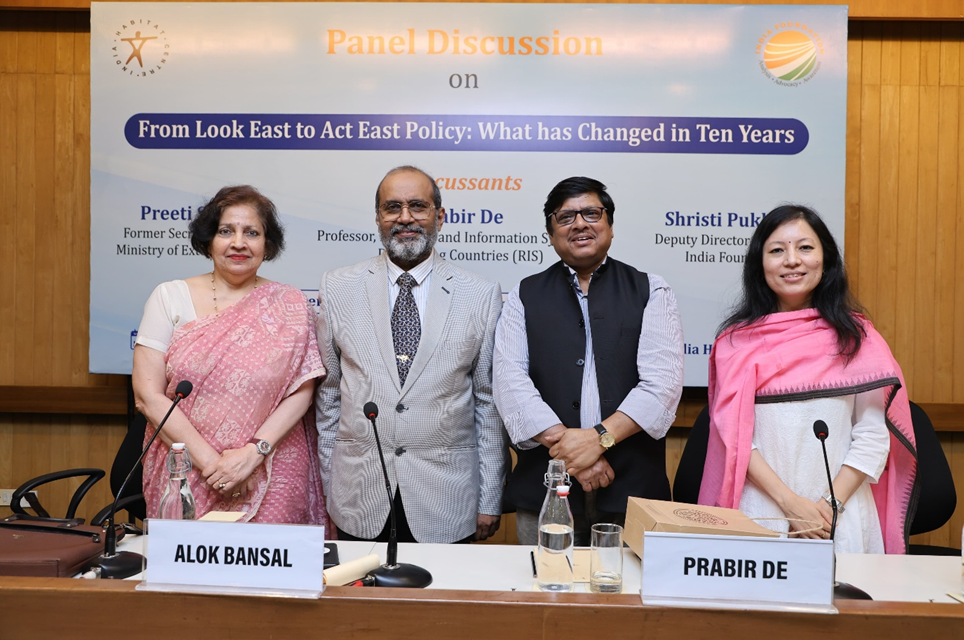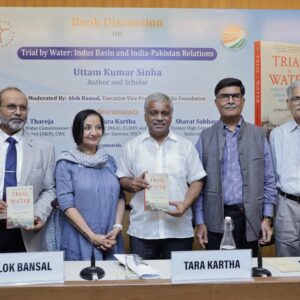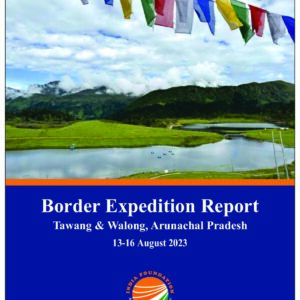India Foundation, in collaboration with India Habitat Centre, organised a panel discussion on the topic ‘From Look East to Act East Policy: What has Changed in Ten Years’ at Gulmohar Hall, India Habitat Centre, on 26 May 2025. The panelists for the discussion were Amb Preeti Saran, Former Secretary (East), Ministry of External Affairs; Dr Prabir De, Professor at RIS, New Delhi and Dr Shristi Pukhrem, Deputy Director (Research), India Foundation. The session was moderated by Capt Alok Bansal, Director- India Foundation.
Amb Saran opened the session by providing a foundational overview of India’s transition from the Look East Policy (LEP) to the Act East Policy (AEP). She emphasized that LEP, initiated in the early 1990s, primarily focused on economic integration and symbolic diplomacy with Southeast Asia. However, AEP, launched in 2014, marks a more action-oriented, comprehensive approach involving strategic, defence, cultural, and connectivity-based dimensions. She highlighted the three core pillars of AEP: Culture, Commerce, and Connectivity, underlining how these have guided India’s diplomatic and infrastructural outreach in the region.
Dr De focused on evaluating the achievements and challenges during the first decade of the Act East Policy. He acknowledged that despite multiple global shocks, India achieved significant progress in logistics, payment systems, and cargo movement. As the policy enters its second decade, he emphasized the need for proactive cultural engagement, revival of agreements like AITIGA, and deeper FDI facilitation to strengthen value chains. He also called attention to enhanced partnerships with countries such as Japan, Korea, Indonesia, Singapore, and highlighted Vietnam as a strategic country of focus.
Dr Pukhrem offered a comprehensive review of India’s transformation from LEP to AEP, focusing on strategic, economic, and diplomatic dimensions. She noted that while LEP was passive and symbolic, AEP is multi-dimensional—encompassing defence, maritime security, digital partnerships, and people-to-people connections. India’s growing involvement in ADMM+, QUAD, and defence ties with Vietnam and the Philippines were highlighted as proof of this strategic upgrade. Regular high-level visits and institutional dialogues have improved India’s regional diplomacy. Northeast India was emphasized as a strategic bridge, especially through projects like Kaladan, IMT, and summits like the Rising Northeast Investor Summit. Tangible gains of AEP include deeper strategic ties, expanded trade with ASEAN ($120 billion in 2023–24), and India’s rise as a net security provider. Cultural diplomacy initiatives such as Nalanda University revival, ASEAN-India Youth Summit, and Champa-Kalinga project were cited as important milestones.
However, the panelist also pointed out certain shortfalls related to India’s Act East Policy: India’s lack of visibility in Southeast Asian public perception (as seen in the 2025 ISEAS survey), a growing trade deficit, and the need for more assertive engagement. In conclusion, they emphasized that India must expedite connectivity projects, invest in cultural diplomacy, and most importantly, leverage the Northeast as a strategic asset. They also argued that the External Affairs Minister’s clarion call: “Not just Act East, but Act Fast—and attract the East” must be taken both in letter and spirit.




